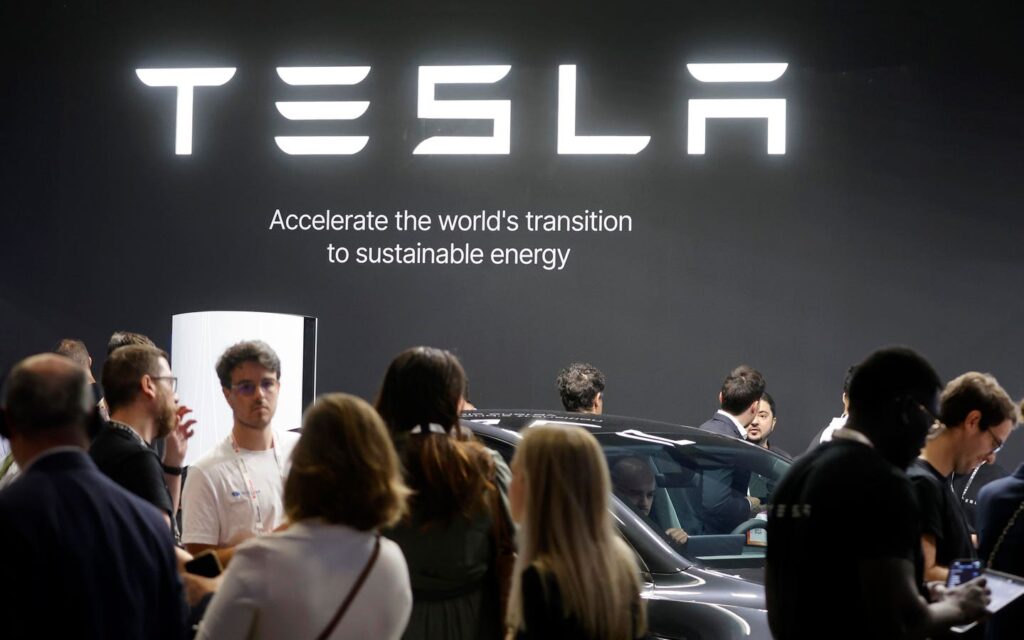Tesla (NASDAQ:TSLA) has established itself as a frontrunner in the realm of autonomous driving for quite some time. Its Full Self-Driving (FSD) software improves the driving experience by automating specific tasks, enabling Tesla vehicles to navigate, change lanes, and park independently while necessitating the driver’s active supervision. However, despite years of anticipation and high investor expectations, Tesla’s FSD does not seemingly make a substantial contribution to the company’s revenues, while other tech giants like Google have been ramping up their investments in self-driving technology. Concurrently, higher-margin software products such as FSD are becoming increasingly crucial to Tesla’s growth narrative as its core EV business faces pressure from waning demand and heightened price competition. So, what is the current status of the FSD software?
$550 Million in FSD Revenue
Tesla offers FSD as either a one-time purchase of $8,000 or a subscription priced at $99 per month. We believe the subscription option is likely to be the preferred choice for most new Tesla buyers due to its flexibility and lower initial cost. Although Tesla does not report FSD revenue separately, estimates from RBC Capital Markets indicate that roughly 5% of customers chose the subscription by early 2024. This attach rate has likely improved after Tesla reduced the monthly fee by 50% to $100 by April 2024. Based on vehicle delivery forecasts for 2025, we estimate that Tesla could sell approximately 1.7 million vehicles this year. If we assume that 10% of these customers opt for the FSD subscription, that results in about 170,000 additional subscriptions.
This would raise cumulative subscriptions to around 460,000 by the end of this year. See detailed calculations in our dashboard How Big Is Tesla’s Software Business? At a monthly rate of $100, that translates to approximately $550 million in annual revenue for Tesla. While this is significant, it remains a small portion of Tesla’s total sales, and it falls short of justifying the substantial valuation premium that Tesla’s stock commands on account of FSD’s long-term potential. On a different note, if you’re looking for upside with less volatility than individual stocks, the Trefis High Quality portfolio offers an alternative, having outperformed the S&P 500 and generated returns exceeding 91% since its inception.
Is Waymo Ahead Of Tesla?
Elon Musk has continuously promised significant advancements in autonomy, yet Tesla has frequently missed its own timelines. For example, Musk had asserted that v13 of the FSD software would facilitate a 5 to 6 times increase in miles driven between disengagements compared to the v12.5 version. The miles between critical disengagements, which indicates the average distance a vehicle travels before the system must be disengaged, is regarded as a vital safety metric for FSD. Nonetheless, data now reveals that v13 yielded barely a 2.5 times improvement, increasing from 200 miles to about 495 miles. The head of FSD at Tesla has previously mentioned that for Tesla to achieve truly unsupervised self-driving, the average number of miles per critical intervention would need to match the “equivalent of human miles between collisions,” which stands at approximately 700,000 miles. By this measure, it appears Tesla has a considerable distance to cover.
Conversely, Alphabet’s Waymo has been quietly and consistently making tangible strides in the real world. The company is currently conducting over 250,000 fully autonomous, paid rides each week across Phoenix, San Francisco, and Los Angeles, a significant increase from around 10,000 rides merely two years ago. Waymo’s vehicles operate without any human oversight, in contrast to Tesla’s FSD, which still requires driver supervision. Additionally, riders seem to have a preference for Waymo; according to Earnest Analytics, Waymo retains riders at a higher rate than Uber or Lyft. This implies that once individuals experience fully autonomous rides, they favor them. Safety could also be a compelling selling point. Waymo’s safety report from last year indicated that its autonomous vehicles achieved a 78% reduction in injury-causing crashes compared to human drivers. See: Waymo To Separate From Google?
Tesla May Have Tricks Up Its Sleeve
That being said, Tesla has some advantages at this moment. Waymo’s system relies on a comprehensive hardware stack that includes custom lidar and radar sensors as well as cameras that are retrofitted to the vehicles it procures from traditional automakers. In contrast, Tesla relies on a camera-only system powered by neural networks. This approach makes Tesla’s system potentially simpler and cheaper to scale. Furthermore, there are likely over 5 million Teslas currently on the road, and it’s reasonable to assume that a significant percentage of these vehicles are equipped with the necessary hardware to run FSD software. If the software can advance accordingly, Tesla could activate a vast FSD user base, swiftly altering the economics of its business.
Read the full article here


